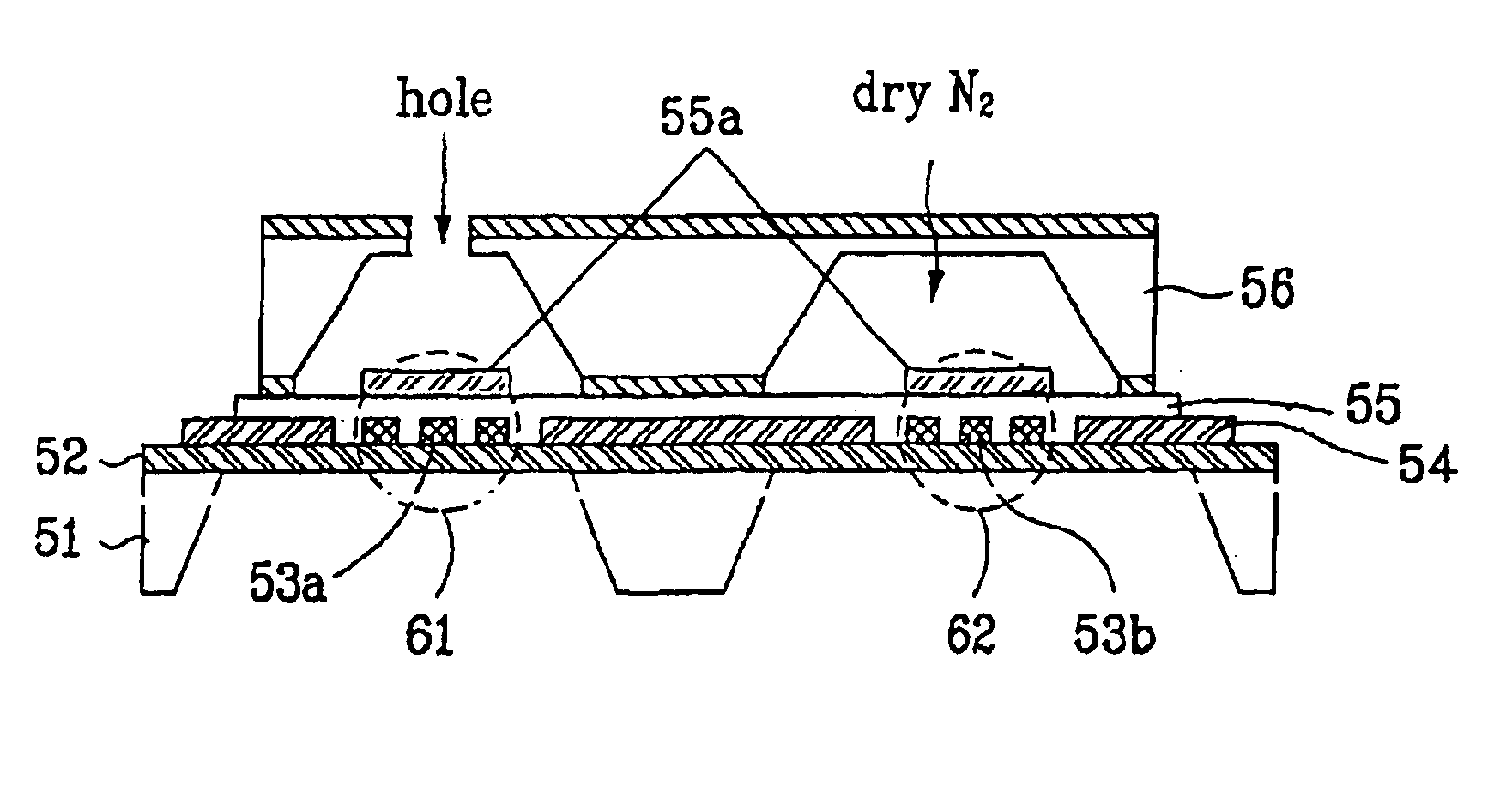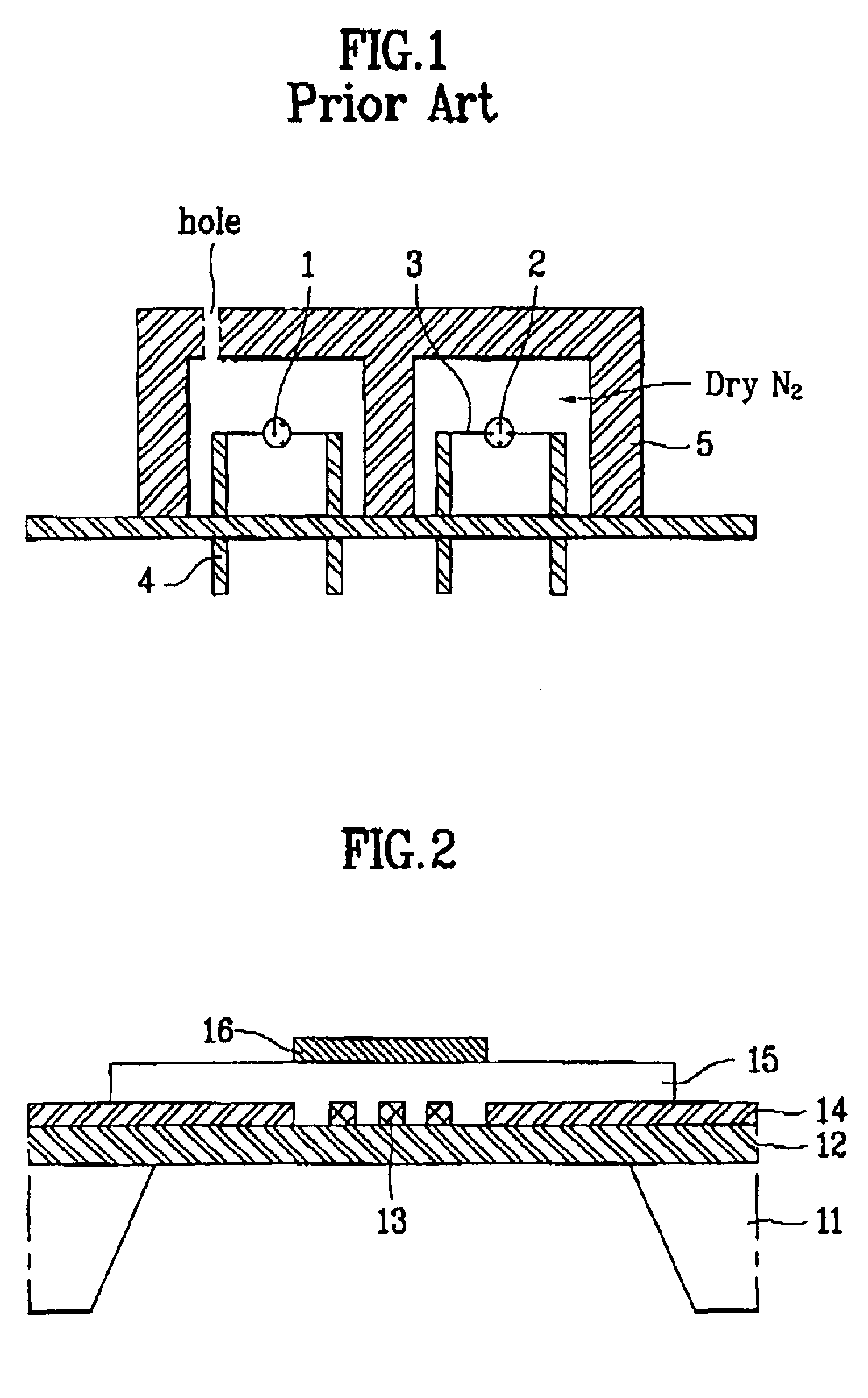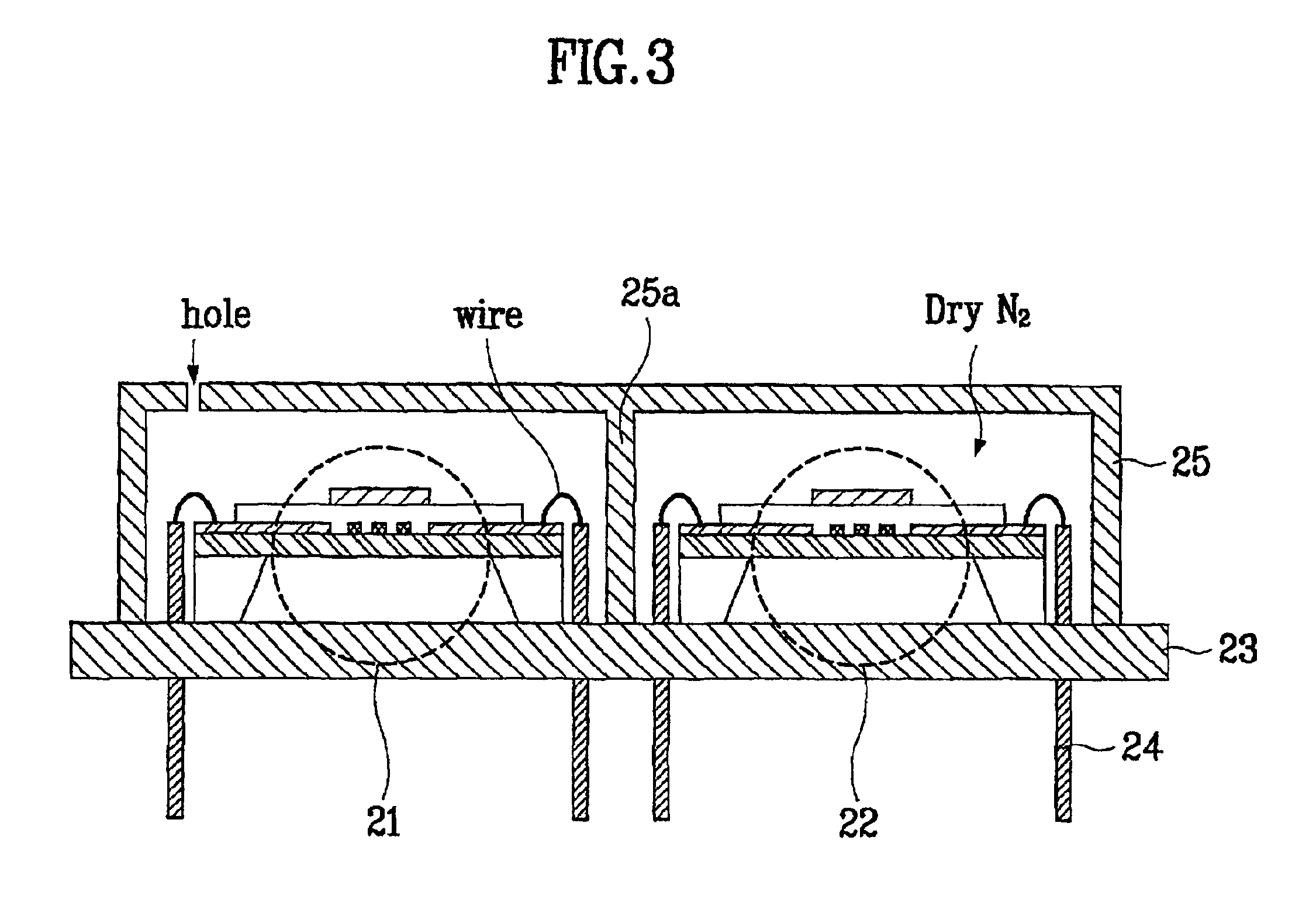Absolute humidity sensor
- Summary
- Abstract
- Description
- Claims
- Application Information
AI Technical Summary
Benefits of technology
Problems solved by technology
Method used
Image
Examples
first embodiment
FIG. 2 is a structural sectional view showing a membrane type absolute humidity sensor according to the first embodiment of the present invention.
As shown in FIG. 2, a membrane 12 of SiO2, Si3N4, SiOxNy, or SiO2 / Si3N4 / SiO2 is formed on a silicon substrate 11. A resistor material having a temperature coefficient of resistance (TCR) is deposited on the membrane 12 and then patterned to form a resistor 13. The resistor is formed of one or more of Ti, Pt, Ni, Ni—Cr, and VO2.
Subsequently, a metal film is deposited on the resistor 13 having the TCR and then patterned to form an electrode pad 14 to be in contact with the resistor 13.
A passivation film 15 is formed on the resistor 13 to cover the resistor 13.
At this time, the passivation film 15 is formed of a material having excellent insulating characteristics, such as SiO2, Si3N4, SiOxNy, a PSG, and polyimide.
Next, a metal film such as Al or Au is deposited on the passivation film 15 and then patterned to form a thermal conductive film 1...
second embodiment
In the second embodiment of the present invention, it is intended that an absolute humidity sensor for a humidity sensing element and an absolute humidity sensor for a temperature compensating element are integrated on one chip to facilitate mass production.
FIG. 4 is a structural sectional view showing a membrane type absolute humidity sensor according to the second embodiment of the present invention.
As shown in FIG. 4, a membrane 32 of SiO2, Si3N4, SiOxNy, or SiO2 / Si3N4 / SiO2 is formed on a silicon substrate 31. A resistor material having a TCR is deposited on the membrane 32 and then patterned to form a resistor 33 for a humidity sensing element and a resistor 33b for a temperature compensating element. The resistors 33a and 33b are formed of one or more Ti, Pt, Ni, •Ni—Cr, and VO2.
Subsequently, a metal film is deposited on the resistors 33a and 33b having the TCR and then patterned to form an electrode pad 34 to be in contact with the resistors 33a and 33b.
A passivation film 35 ...
third embodiment
The third embodiment of the present invention is identical to the second embodiment in its structure.
However, in the third embodiment of the present invention, external humidity is propagated into not a membrane through a stem formed at a lower portion but an insulating film through a shield case and a silicon cap which are formed at an upper portion.
FIG. 7 is a structural sectional view showing a membrane type absolute humidity sensor according to the third embodiment of the present invention, and FIGS. 8A and 8B are structural perspective views showing the membrane type absolute humidity sensor according to the third embodiment of the present invention.
As shown in FIGS. 7, 8A and 8B, a membrane 52 is formed on the silicon substrate 51. A resistor 53a for the humidity sensing element and a resistor 53b for a temperature compensating element are formed on the membrane 52. The resistors 53a and 53b are formed of one or more of Ti, Pt, Ni, Ni—Cr, and VO2.
Subsequently, an electrode pad...
PUM
 Login to View More
Login to View More Abstract
Description
Claims
Application Information
 Login to View More
Login to View More - R&D
- Intellectual Property
- Life Sciences
- Materials
- Tech Scout
- Unparalleled Data Quality
- Higher Quality Content
- 60% Fewer Hallucinations
Browse by: Latest US Patents, China's latest patents, Technical Efficacy Thesaurus, Application Domain, Technology Topic, Popular Technical Reports.
© 2025 PatSnap. All rights reserved.Legal|Privacy policy|Modern Slavery Act Transparency Statement|Sitemap|About US| Contact US: help@patsnap.com



